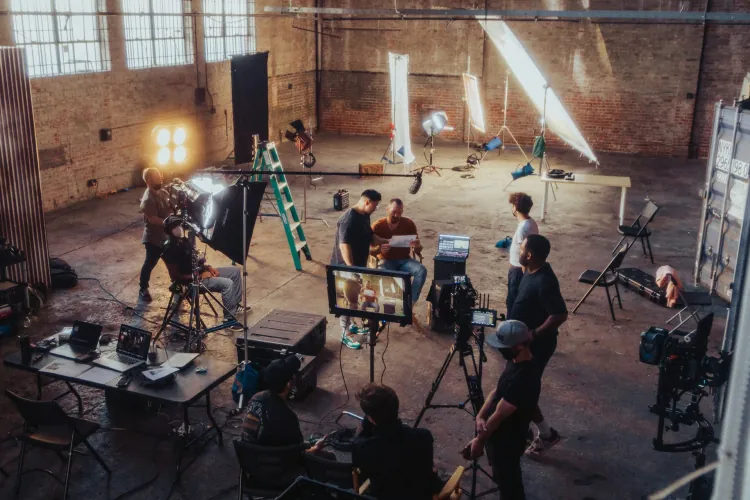The Power of Voice in Cinema: Enhancing Storytelling Through Sound
Discover the power of voice in cinema and how it enhances storytelling. Explore the role of narration, character voice, silence, and sound design in creating immersive and impactful films.

The Power of Voice in Cinema: A Key Element in Storytelling
Voice plays an indispensable role in cinema, transcending mere dialogue to become a powerful tool in storytelling. Whether it's through the timbre of a character's speech, the voice-over narration guiding the audience, or the strategic use of silence, voice in cinema shapes the narrative, adds depth to characters, and evokes emotions in ways that visuals alone cannot achieve. In this article, we explore the multifaceted significance of voice in cinema and its impact on the viewer's experience.
The Narrative Voice: Guiding the Story
One of the most direct uses of voice in cinema is through narration. Voice-over narration can provide exposition, offer insights into a character's thoughts, or create a connection between the audience and the story. Classic films like Forrest Gump and The Shawshank Redemption utilize voice-over narration to offer a deeper understanding of the protagonist's journey, providing context and emotional resonance that enrich the narrative.
Voice-over narration can also be used creatively to subvert expectations. In films like Fight Club and American Psycho, the unreliable narrator technique adds layers of complexity, making the audience question the truth of what they are hearing and, by extension, what they are seeing. This interplay between voice and visuals creates a dynamic and engaging storytelling experience.
Characterization Through Voice
A character's voice is a critical element of their identity. The way a character speaks—their accent, tone, pitch, and speech patterns—can reveal a lot about their background, personality, and emotions. In animated films, where physical expressions are often exaggerated, voice acting becomes even more crucial. Consider the distinctive voices of characters in Toy Story or Shrek, where the vocal performances by actors like Tom Hanks and Eddie Murphy bring the animated figures to life in a memorable way.
Voice casting in animated films and even live-action films can significantly impact how a character is perceived. The right voice can convey authority, vulnerability, menace, or charm. Iconic performances, such as James Earl Jones as Darth Vader in Star Wars or Morgan Freeman's narration in numerous films, demonstrate the profound effect a well-chosen voice can have on a character's impact and the overall tone of a film.
The Power of Silence
Voice in cinema isn't just about spoken words; it's also about the strategic use of silence. Silence can be a powerful storytelling device, creating tension, emphasizing moments of introspection, or highlighting the significance of a particular scene. In films like A Quiet Place, silence becomes a central theme, with the absence of sound intensifying the suspense and forcing the audience to pay closer attention to visual cues and subtle sounds.
Silence can also be used to convey a character's emotional state. A moment of silence following a dramatic revelation can be more impactful than any dialogue, allowing the audience to absorb the gravity of the situation and empathize with the characters.
Sound Design: Enhancing the Voice
Sound design plays a crucial role in how voice is perceived in cinema. The manipulation of sound effects, background noise, and ambient sounds can enhance or contrast with the spoken word to create a richer auditory experience. In horror films, for example, the use of eerie soundscapes combined with whispered voices can heighten the sense of fear and unease.
Additionally, technological advancements in sound design, such as Dolby Atmos, have allowed filmmakers to create more immersive audio experiences. The placement and movement of voices within a three-dimensional sound space can make the audience feel as though they are part of the scene, further drawing them into the story.
Conclusion
Voice in cinema is a powerful tool that extends far beyond mere dialogue. It is a multifaceted element that shapes narratives, defines characters, and evokes emotions. Through voice-over narration, vocal performances, the strategic use of silence, and innovative sound design, filmmakers can create a deeply immersive and impactful storytelling experience. As technology continues to evolve, the role of voice in cinema will undoubtedly expand, offering new possibilities for creative expression and audience engagement.
What's Your Reaction?






















